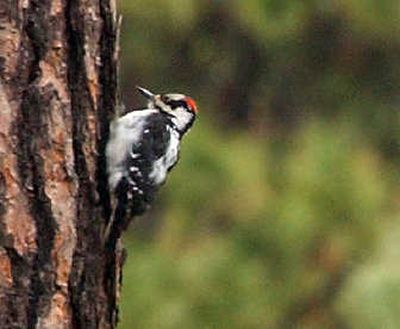Cleaning the chimney is strictly for the birds

A 17-foot stovepipe runs between my wood stove and the top of my living room ceiling. From there, it passes through the attic and emerges on my 10-pitch roof, where it juts another 6 feet into the air. When I built this house and opted for wood heat, a high ceiling, and a 10-pitch roof, I did not take into consideration the fact that stovepipes must be periodically cleaned to prevent soot buildup and dangerous chimney fires.
Although I am admittedly somewhat frugal, I value my limbs much more than my greenbacks, so the first time my stovepipe needed cleaning, I called professional chimney sweeps to do the work. My 10-pitch roofs, however, also intimidated the professionals, and after that first time, I couldn’t get them to come back. I’d have to do the work myself.
To even get close to my stovepipe on the roof, I had to tie a rope to one of the porch supports on the north side of the house, throw the rope over the house, then use the rope as would a mountain climber to scale the heights. It required that one have a lot more faith than I in the integrity of ropes and porch supports. I prepared for my ascent with a heads up to the local ambulance service: If they heard a man moaning into the phone, it was probably me.
Once I got to the stovepipe and removed the cap, I had to throw a weighted cord attached to a heavy wire brush into the abyss; climb back down, go inside, and pull the brush through into the fireplace; it was a messy operation.
About six years ago, a woodpecker found an opening in the spark screen on my chimney and came down the entire length of the pipe, evidently beating its wings all the way. When I investigated the eerie tapping on the glass door of my stove, I found the soot-covered bird staring at me balefully from within. To my delight, there was a huge pile of soot he had knocked loose in his descent, and very appreciative of his labors, I tried to capture him so he could be released outside.
I donned a heavy glove, opened the fireplace door just a bit and stuck my hand inside. The bird fluttered about, raising a huge cloud of ash that sifted out the door into the front room. Then, he tried to fly back up the chimney, releasing even more black soot that so clogged his little birdy sinuses he became very lethargic. I opened the door wider, reached in and grabbed him gently about the body. He promptly turned his head and pecked me. It didn’t hurt so much as it surprised me, but I yelled and let him go. At that point, he rediscovered his wings, zipping around the house, bouncing off walls and windows, leaving little black smudges to mark his passage.
Eventually I recaptured the woodpecker with a large fishing net and took him to the porch. Observed intently by my two dogs, I threw him into the air. “Be free!” I called. “And thanks.” The woodpecker promptly flew across the driveway and crashed into the shed window. My dogs ate him. So much for appreciation.
Ever since that first visit, I have not had to clean my chimney. Each spring, a new recruit finds the hole in the spark screen and comes fluttering down the chimney with the year’s accumulation of soot. I have perfected my catch-and-release techniques, too, and in the past five seasons there have been no other wall smudges and no additional chimney mortalities.